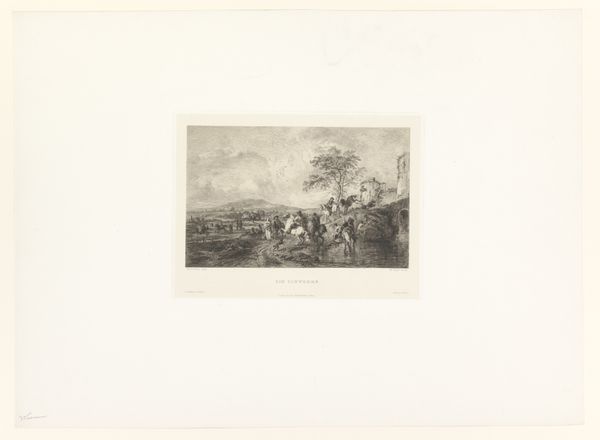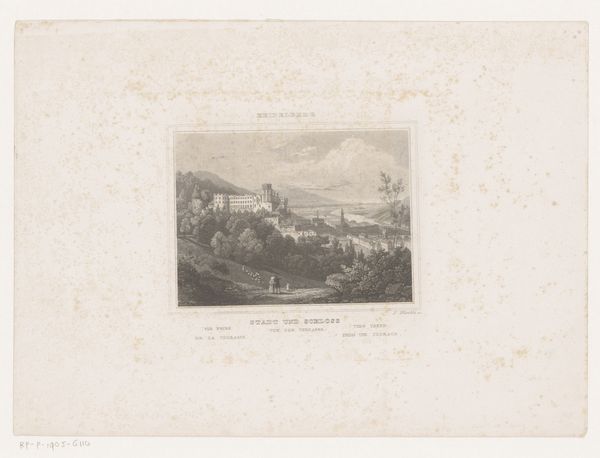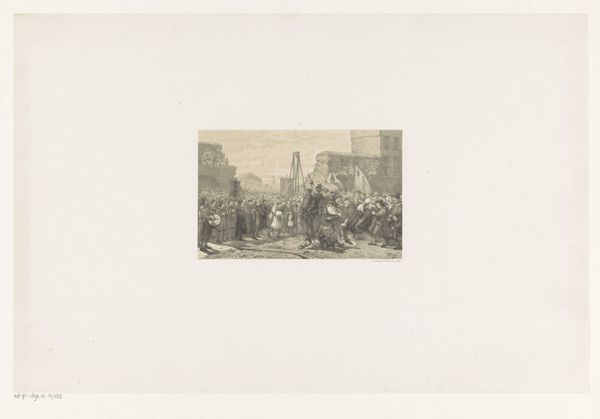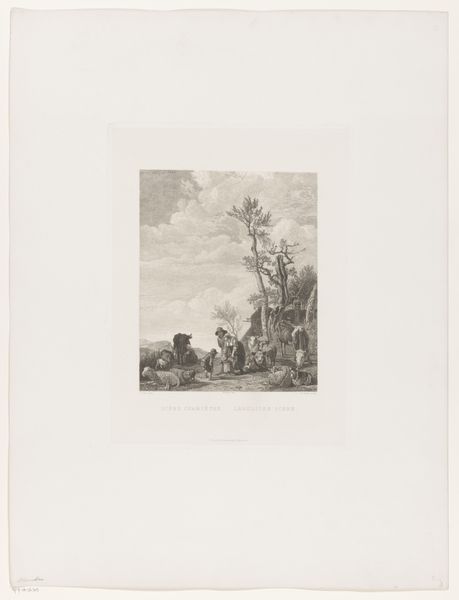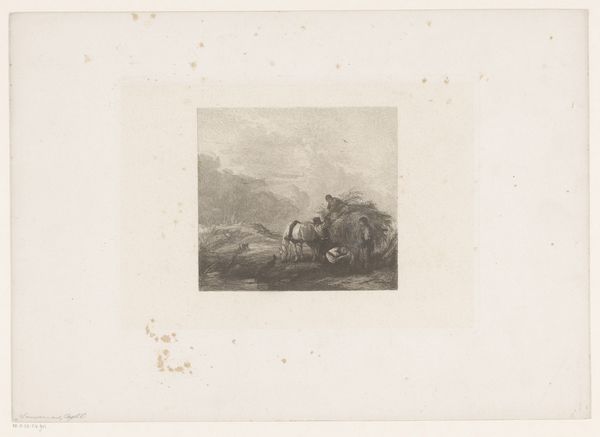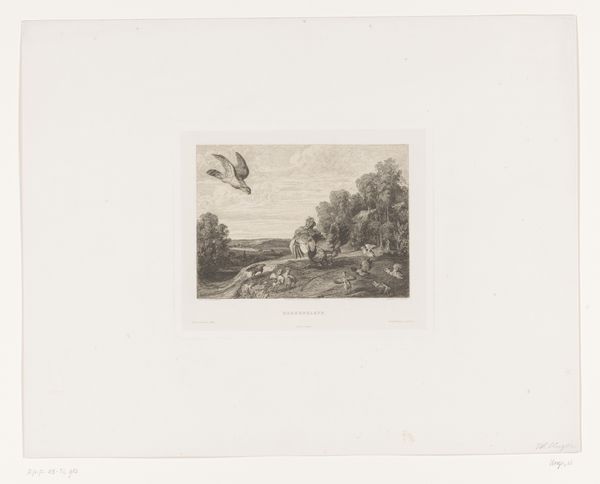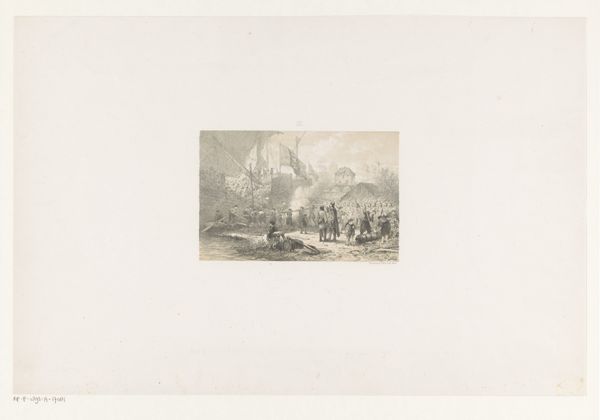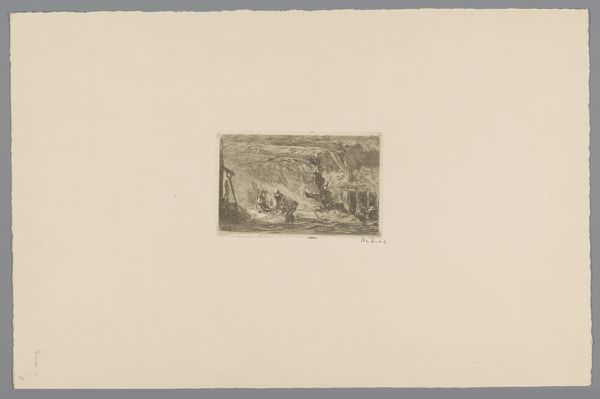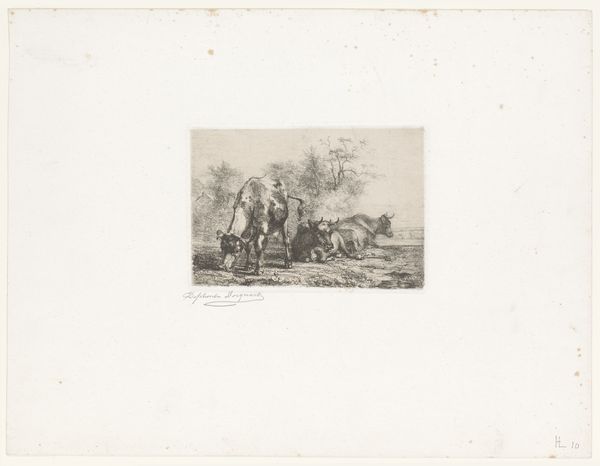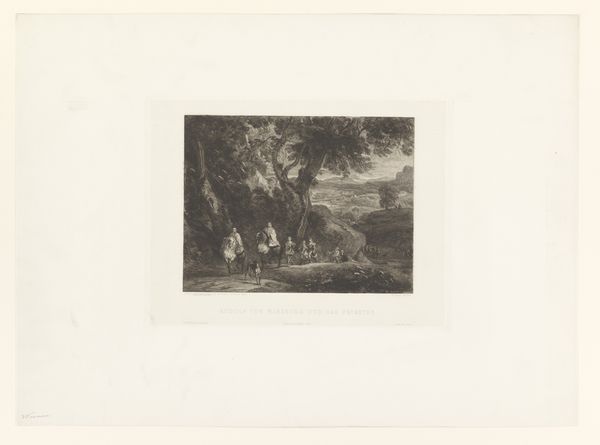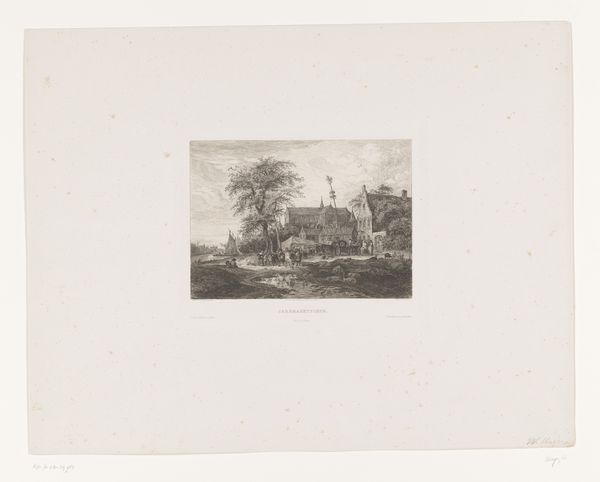
print, etching
# print
#
etching
#
landscape
#
horse
#
realism
Dimensions: height 177 mm, width 236 mm
Copyright: Rijks Museum: Open Domain
Curator: This is William Unger's "Kar getrokken door zes paarden," or "Cart Pulled by Six Horses," an etching dating from 1847 to 1889, housed here at the Rijksmuseum. Editor: My immediate reaction is one of strain and tension. You feel the force of those horses; their muscles seem to ripple across the scene. It’s heavy, both visually and emotionally. Curator: Indeed. Unger was a master printmaker. What I find interesting is how he uses etching to portray not just the surface appearance of things, but the labor and energy inherent in the scene. The lines, so fine, create an almost tactile sense of exertion. It forces one to consider the working-class subject matter. Editor: Absolutely. The social context is vital here. These animals and likely people are caught in a relentless cycle of labor. How might we read the role and use of the horses alongside or even instead of marginalized groups, echoing debates around industrialization, animal rights, and labor exploitation that were brewing then and continue to exist now? The work creates this image of both bucolic scene but also real hardship. Curator: It also raises questions about value. The labor of the horses and the laborers operating alongside of them are both represented here, yet the landscape style has artistic cache and so their work gains representation in an artistic medium and market where traditionally those who labored were often excluded. The medium becomes part of a cycle here. Editor: It is a brilliant example of the intersection between art and social commentary, urging us to reflect on whose stories are deemed worthy of documentation and how artistic mediums influence perceptions of labor, nature, and progress. The medium itself further mediates these ideas. Curator: Ultimately, viewing "Cart Pulled by Six Horses" allows us to reflect upon how even seemingly straightforward representational art implicates social context, processes, and materials. Editor: And it makes us consider the lasting impact of these images, asking if these cycles of labor and representation ever end, and, more importantly, how do we strive for more just ones.
Comments
No comments
Be the first to comment and join the conversation on the ultimate creative platform.
